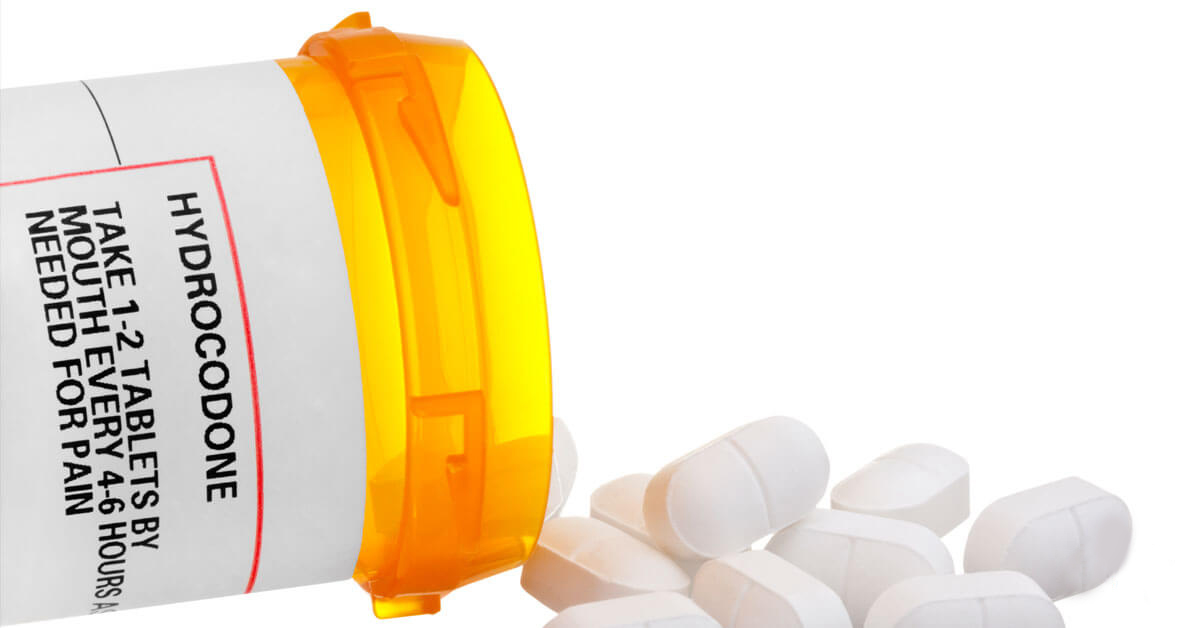More than 20% of Americans suffer from chronic pain conditions, and many are turning to opioid painkillers as a solution. The rate at which opioids are the lowest they’ve been in the past fifteen years. In 2022, the most recent reporting data available, 39.5 of every 100 persons were prescribed an opioid.
However, in some U.S states, those prescription rates continue to be as high as 74.5 out of 100 people.
Opioid use is not without consequences. These powerful drugs can have a long list of side effects and long-term effects. While prescription opioids are not a primary driver of drug overdose in the United States, they do currently contribute to opioid-related deaths. Chronic (long-term) and heavy opioid use can also play a role.
Here’s what you need to know about how opioids work in your brain and body and the side effects of short and long-term use.
What Are Opioids?
Opioids are a class of drugs that include legal narcotic painkillers as well as illicit drugs, such as heroin. Some prescription opioids are made from the poppy plant, and others are made in labs from synthetic ingredients with the same chemical structure.
Some commonly used opioids include:
- Fentanyl
- Hydrocodone
- Methadone
- Morphine
- Oxycodone
What Are Opioids Prescribed For?
Prescription opioids have been used to treat both chronic pain and more common kinds of pain caused by back injuries, headaches, arthritis, and other conditions.
How Do Opioids Work?
Opioids don’t work by removing pain but by decreasing the perception of pain and producing a sense of pleasure and well-being.
Opioid chemicals travel through the bloodstream to the brain, where they attach to specialized proteins on the surface of opiate-sensitive brain cells (neurons). This triggers a release of dopamine, a feel-good chemical activated as a part of the brain’s reward system.
What Are The Side Effects Of Opioid Use?
The most common side effects of opioid use are constipation and nausea. Other common side effects of opioid use include sedation, dizziness, vomiting, tolerance, physical dependence, and respiratory depression.
Less common side effects of opioid use may include:
- Gastroparesis: a disorder also known as delayed gastric emptying, which slows or stops the movement of food from the stomach to the small intestine, leading to pain, excess gas, bloating, heartburn, and weight loss.
- Hyperalgesia: hypersensitivity to pain caused by opioid use which causes the nervous system to become overly sensitive to painful and non-painful stimuli.
- Muscle rigidity: the inability of muscles to relax normally, causing muscle pain as muscles stay contracted for a long period of time.
- Myoclonus: sudden involuntary jerking or twitching of a muscle or group of muscles which cannot be controlled.
Long-term use of opioid prescription medications (6 months of use or longer) can cause serious side effects, particularly when taken at high doses.
What are some of the more dangerous side effects of long-term opioid use?
What’s The Danger Of Long-Term Opioid Use?
Long-term opioid use can increase the risk of side-effects and lead to adverse consequences. Some of the less common side effects of opioid use mentioned above, such as hyperalgesia (increased sensitivity to pain), become more common when opioids are used in high amounts or over a longer period of time.
Other long-term side effects of opioid use can include:
Hormonal dysfunction
Prolonged opioid use can have hormonal effects that result in menstrual period changes as well as reduced fertility, libido, and sex drive. Research on the effect of opioids on the endocrine and other hormonal systems includes the risk of:
- Hypogonadism: when male testes or female ovaries produce little or no sex hormones (testosterone or estrogen)
- Hypocortisolism: also known as Addison’s disease or adrenal insufficiency
- Decreased sexual function
- Loss of muscle mass
Immunosuppression
Prolonged use of opioids can also result in immunosuppression or a weakening of the immune system. The most prevalent effect of opioid-induced immunosuppression has been reported as increased susceptibility to infection, increased risk of cancer, and an increased risk of HIV infection in drug abusers.
Kidney Health
Researchers suggest that opioid use may result in chronic kidney disease (CKD). Opioids have complex interactions with the body’s neuroendocrine systems, and long-term use may alter the automatic nervous system, dehydration, rhabdomyolysis, and urinary retention function.
Side-Effects of Long-Term Opioid Use
Long-term opioid use can lead to changes and alterations in many symptoms of the body, resulting in conditions and symptoms including:
Abnormal pain sensitivity
- Amenorrhea or irregular menses
- Increased risk of AFib, heart attack, and heart infection
- Galactorrhea, excessive or inappropriate production of milk
- Immunosuppression
- Increased risk of overdose
- Reduced energy and drive
- Reduced fertility
- Reduced libido
- Testosterone depletion
- Chronic kidney disease
- And more

Opioid Abuse Disorder: A Serious Side Effect Of Long-Term Opioid Use
The physical side effects of opioid use can range from uncomfortable to life-threatening. But the potential for abuse deserves extra attention. Because the risk of developing opioid abuse disorder is high and one of the major reasons that America is in the midst of an unprecedented opioid crisis.
How does opioid use turn into opioid use disorder or substance use disorder?
Your Brain on Opioids: Pursuing the Reward
Remember how opioids work: they reduce the perception of pain by triggering pleasurable chemicals to be released and activating the reward system of the brain.
The brain associates the action of taking the opioid with a pleasurable reward event. The brain is wired to continue to seek out pleasurable actions/ events, which can lead to a subconscious “craving” for more and more opioid use. In other words, the brain is learning that opioid use is a positive experience that should be repeated. This becomes even more dangerous for teenagers and young adults, as the teenage brain is still developing.
Physical dependence and addiction to opioids can occur in as little as a few days.
Opioid Tolerance: The Need for More
One of the most common side effects of opioid use, especially long-term use, is tolerance. Opioid tolerance occurs when an individual needs greater amounts of a drug to achieve its therapeutic effect.
When someone first receives an opioid prescription, for example, they may need two pills per day to reduce their perception of pain. However, as time goes by, it begins to take three, four, or more pills per day to achieve the same pain-relieving effects.
At some point, their medical professional may prescribe a more potent, longer-acting opioid. But over time, the patient can become tolerant to even the most potent prescription, requiring more and more of the drug to get the same effect.
Some people turn to harder drugs in order to seek new and potentially more effective ways to get similar effects. Approximately 80% of new heroin users report prescription painkillers as their initiation to opioid use and subsequent opioid use disorder (OUD).
Opioid Withdrawal
Another factor contributing to a high risk of opioid abuse is physiological withdrawal symptoms. Prolonged use of opioids changes the way nerve receptors work in the brain, which eventually becomes dependent on the drug to function. When an opioid user stops or decreases opioid use, it can lead to physical symptoms of withdrawal, which can range from mild to moderate or severe.
Opioid withdrawal can become a life-threatening condition with symptoms including:
- Muscle aches
- Restlessness
- Anxiety
- Eyes that tear up
- Runny nose
- Excessive sweating
- Inability to sleep
- Yawning very often
- Diarrhea
- Abdominal cramping
- Goosebumps on the skin
- Nausea and vomiting
- Dilated pupils and possibly blurry vision
- Rapid heartbeat
- High blood pressure
Opioid withdrawal symptoms can be very uncomfortable, and opioid users may continue to take their drugs to avoid the physical withdrawal effects.
Fatal Overdose: The Lethal Side Effect Of Opioid Use
There is one final effect of opioid use that must be addressed: the risk of fatal overdose.
Opioids, primarily synthetic opioids, are the main driver of drug overdose deaths in the United States. As opioid prescriptions increased, the rate of opioid overdose deaths surged in parallel.
Synthetic opioids, such as fentanyl, and other manufactured forms of these drugs also pose extreme dangers. Synthetic opioids such as fentanyl are driving the majority of opioid-related deaths in the United States.
Increased Danger: Mixing Opioids with Other Substances
Unless advised by health providers, certain medications should be avoided when taking opioids due to increased risks of severe drowsiness, decreased awareness, breathing problems, coma, or death. These medications include:
- Benzodiazepines (alprazolam, lorazepam, or diazepam)
- Sedative/hypnotic agents (zolpidem or eszopiclone)
- Muscle relaxants (carisoprodol, chlorzoxazone, or methocarbamol)
- Antipsychotics (haloperidol, quetiapine, or risperidone)
- Other central nervous system depressants (alcohol or street drugs)
Not every person who uses opioids will become physically dependent, addicted, or will be the victim of a fatal overdose. However, rates of opioid misuse, abuse, and addiction are estimated to range from 15% – 26%. That means there is a risk for one in every four opioid users to fall victim to the dangerous effects of opioid abuse, with potentially fatal results.

Is Opioid Use Right For You?
Chronic pain is one of the most prevalent medical conditions and one of the most difficult to manage. Key patient advocacy and health organizations that strongly support the use of opioids to treat chronic pain have published consensus statements to guide physicians in prescribing these drugs. However, a standardized approach has yet to be met.
If you are considering long-term use of opioids, be sure that:
- Alternatives to opioids for pain management have been tried.
- You understand the true benefits and risks of the long-term use of opioids.
- The initial dose of opioid medication increases should be achieved within weeks.
- Opioid dosage is moderate.
- Further increases in the dose are introduced with extreme caution.
- You use a single physician and pharmacy.
- You use adjunctive treatments for pain whenever possible.
- Your doctor fully documents the entire prescription process, which should include an initial, comprehensive medical history and physical examination, agreed-on goals for treatment, regular assessment of whether the goals are being achieved, and careful monitoring for signs of opioid abuse (including toxicologic screening in some cases).
- You are willing to end opioid treatment if the goals are not met.
In general, experts advise that in the treatment of chronic pain, opioids be used at low or moderate doses. To decrease the risk of negative or adverse side effects, it is suggested that you are monitored closely to make sure you are still benefiting from the drugs in terms of pain relief and physical function. If not, it might be time to consider other options.
This article was originally written by Lee Weber, Editor of Addiction Blog. It has since been updated to reflect current statistics and data and to provide additional information on the side effects and long-term effects of opioid use. The most recent updates to this blog were made in October 2024 to reflect updated research and data on the opioid crisis.
Lee Weber is the main writer, editor, and voice behind Addiction Blog, an online journal that documents alcohol, drug, and prescription drug addiction and its treatment. She believes that safe and responsible prescription of opioid medications should be regulated to prevent haphazard physicians from profiting from pharmaceutical commissions.



